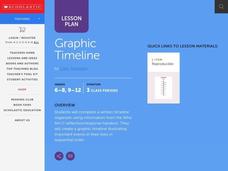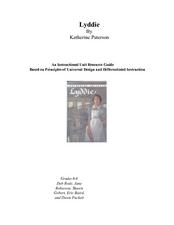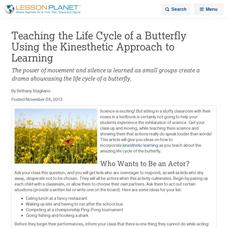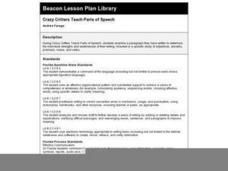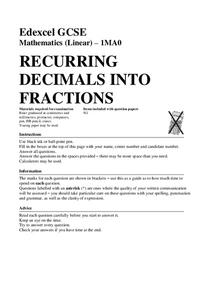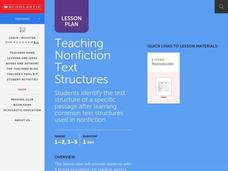Curated OER
Electricity--More Power to Ya!
Fourth graders use research tools to access and synthesize information. They gather and manipulate data using technology. Research and study the components of an electrical circuit. Create a brochure that demonstrates knowledge of how to...
Curated OER
Graphic Timeline
Students complete a written timeline organizer utilizing information from the "Who Am I?" reflection/response handout. They create a graphic time line illustrating important event in their lives in sequential order with the help of...
Curated OER
Letters from Rifka
Fourth graders read Letters from Rifka and discuss the feelings of people forced to leave their homes and countries. In this migration lesson plan, 4th graders relate their feelings about moving from their home forever. Students trace...
Curated OER
All the News That's Fit to Blog
Students critique three Web logs, each of which offers first-hand accounts, but reflect different points-of-view, on the war in Iraq; students write a response to one of the entries and analyze what they learned about the war from the...
Curated OER
How To Teach Without Handouts
Cut down copier time and expand the learner's locus of control with simple and effective diagrams.
Have Fun Teaching
Identifying Author's Purpose
The multi-lesson, 47-page packet contains everything you need to ensure kids can recognize the clues provided to identify the type of text, the intended audience, and the author's purpose in writing the passage.
Curated OER
Notes on Notes
Five straightforward strategies to help your pupils organize and retain information.
Curated OER
Lyddie: An Instructional Unit Resource Guide
Katherine Paterson’s young adult novel Lyddie is the foundation of a differentiated instruction unit that not only explores the rise of industrialization and labor but women’s rights issues as well. After learners read the novel, they...
Curated OER
Teaching the Life Cycle of a Butterfly Using the Kinesthetic Approach to Learning
The power of movement and silence is learned as small groups create a drama showcasing the life cycle of a butterfly.
Louisiana Department of Education
Comprehensive Curriculum Social Studies (Grade 7)
US history from 1776 through 1877 is the focus of a comprehensive curriculum guide designed for seventh graders. Each of the seven units in the 102-page packet includes a list of guiding questions, grade-level expectations, links to...
Curated OER
Basil Heatter, "The Long Night of the Little Boats"
“It was a miracle.” Basil Heatter’s “The Long Night of the Little Boats,” which details the miraculous rescue of the British army from the shores of Dunkirk in 1940, is featured in a series of exercises that ask class members to read,...
Southern Nevada Regional Professional Development Program
Reading Literature - An Occurrence at Owl Creek Bridge
“An Occurrence at Owl Creek Bridge,” Ambrose Bierce’s short story, is used to model how structural moves, the decisions an author makes about setting, point of view, time order, etc., can be examined to reveal an author’s purpose. Groups...
Scholastic
Mega-Fun Fractions
Creative and fun lessons help kids get some hands-on experience with fractions. The resource includes 50 innovative ways to teach kids about equivalent fractions, adding and subtracting fractions, using fractions in money math and...
Curated OER
Email Writing
Students review rules of writing emails for letters, informal to a friend and formal. In this writing lesson, students sort email strips into these categories and then review examples of good and bad semi-formal emails. Students work in...
Curated OER
Crazy Critters Teach Parts of Speech
Middle schoolers create pieces of writing about a creature they have created. They examine the parts of speech and how they are used in their writing to see how they can write more specifically.
Curated OER
Making Informed Decisions
Students discuss various issues of importance in the 1998 congressional and gubernatorial elections, create comparison charts of their states' candidates' positions on these issues, and decide which candidate they would vote for based on...
Curated OER
Internet: Writing Friendly Letters Via Email
Pupils view a Powerpoint presentation on writing and sending email. After examining a Website about the parts of a friendly letter, they compose and send their own letters via email. Teachers set up an email/pen pal account so students...
Curated OER
Be Nice to Spiders Lesson Plan
Students share their own pages with the rest of the class while they learn about spiders. For this Be Nice to Spiders lesson plan, students learn how spiders are living creatures just like people.
Curated OER
Be Used To -- Grammar Worksheet
In this language arts worksheet, students learn the correct use of the "be used to" phrases by first studying an information chart. Students then complete sentences using "be used to" in the correct form. Example: Moving men (are used...
Mathed Up!
Recurring Decimals
Explore how to convert repeating decimals to fractions with an informative video that teaches young mathematicians how to translate between decimals and fractions. After viewing, individuals complete a set of problems to practice this...
Curated OER
Teaching the Novel in Context
Students write a context paper. In this teaching the novel in context lesson, students view a primary sources to recreate the cultural and historical context of the novel. Students make the connection between the literary text and...
Curated OER
Create a Word Graveyard to Teach Synonyms
Students explore descriptive writing by creating headstones. In this memorial lesson, students utilize an 11" x 17" piece of paper to create a cemetery headstone memorializing a word rather than a person. Students decorate their...
Curated OER
Teach Text Structure for Nonfiction
Students gain a strong foundation for reading, writing, and using nonfiction through this lesson plan. They gain an awareness and general understanding what text structures are. Students also identify and interpret what clues they can...
Curated OER
Important Contributions to American Culture
Fifth graders explore the contributions of different cultures to the American landscape. Students work in groups and use a variety of resources to create a presentation about a group that emigrated to America.



